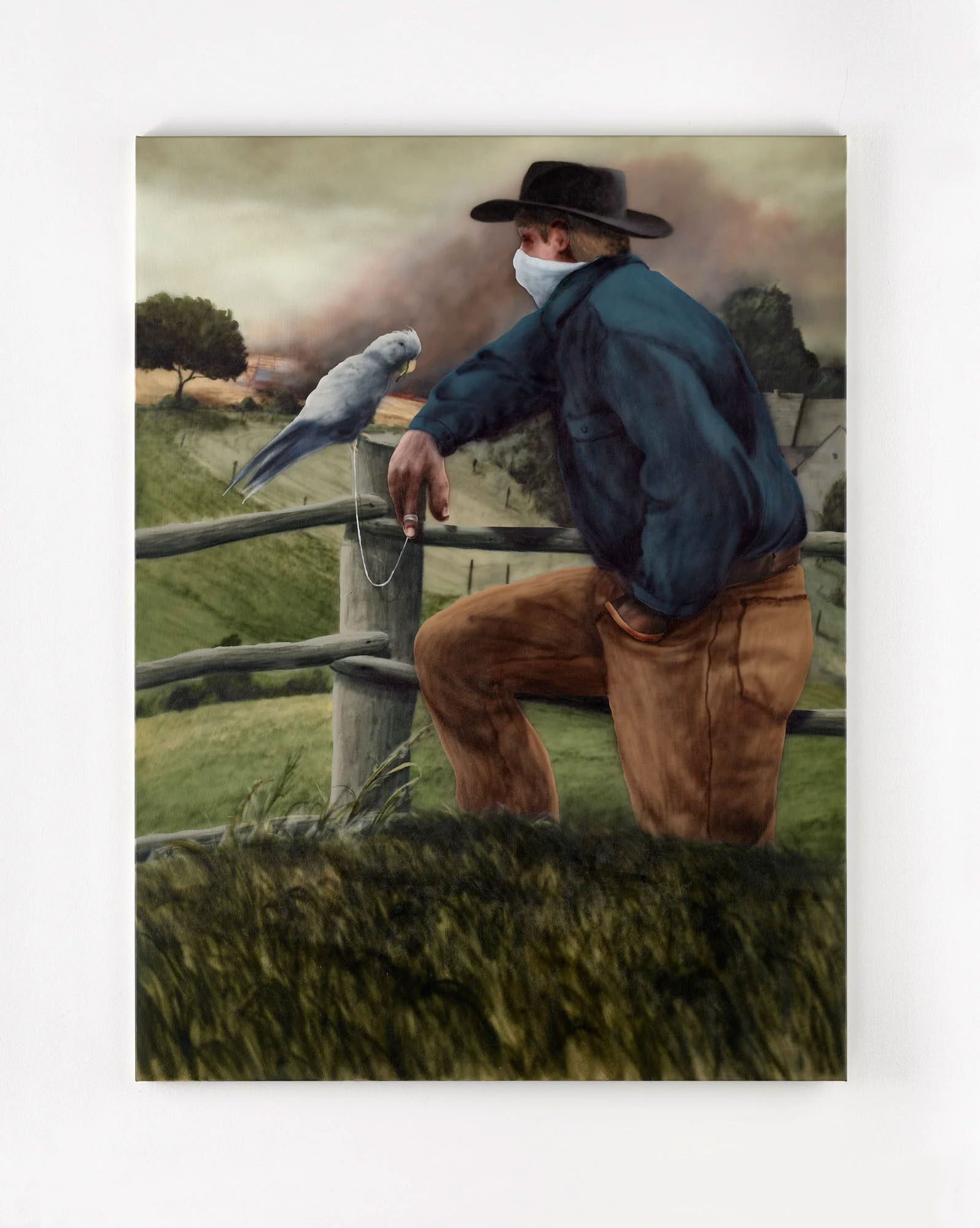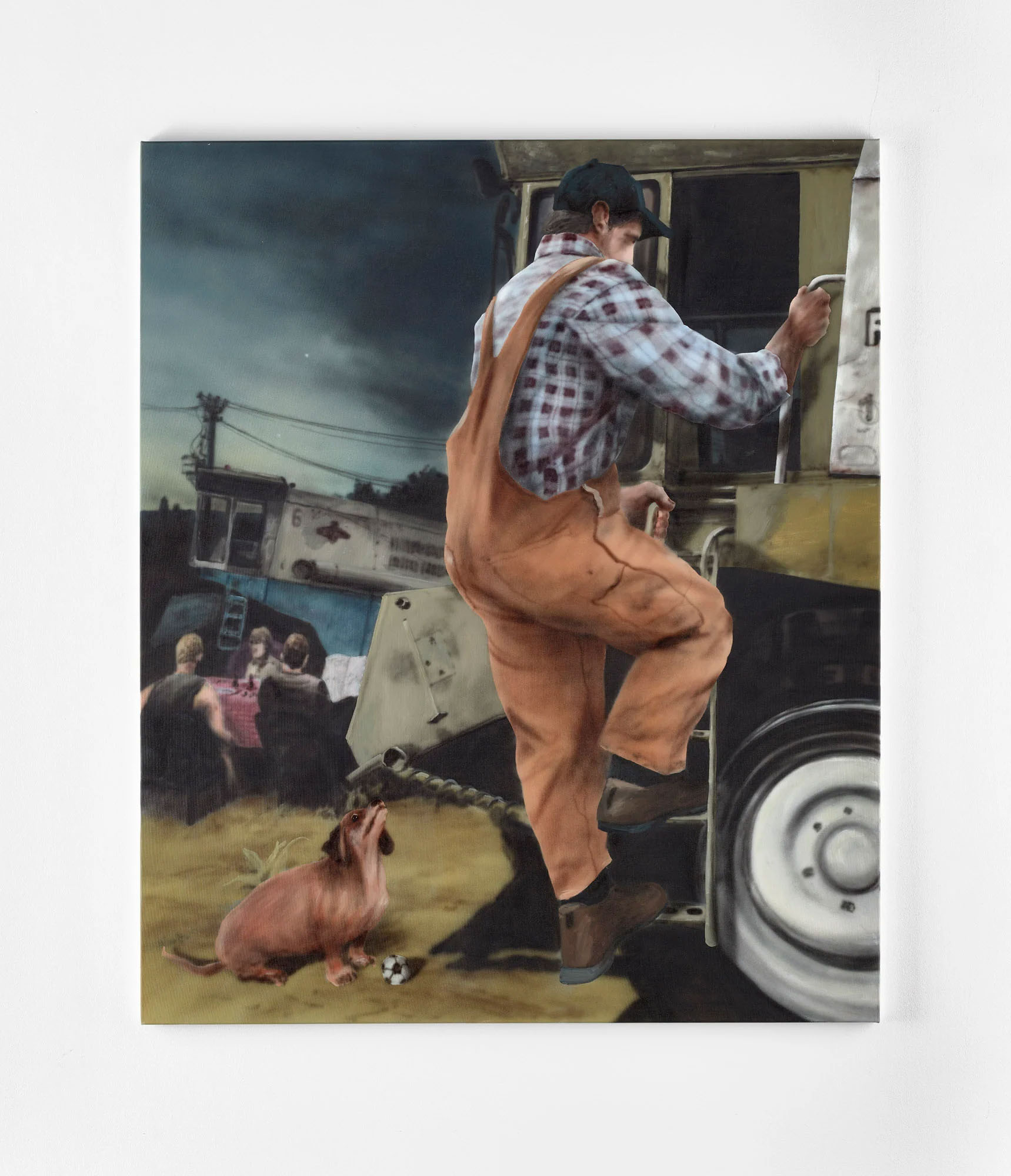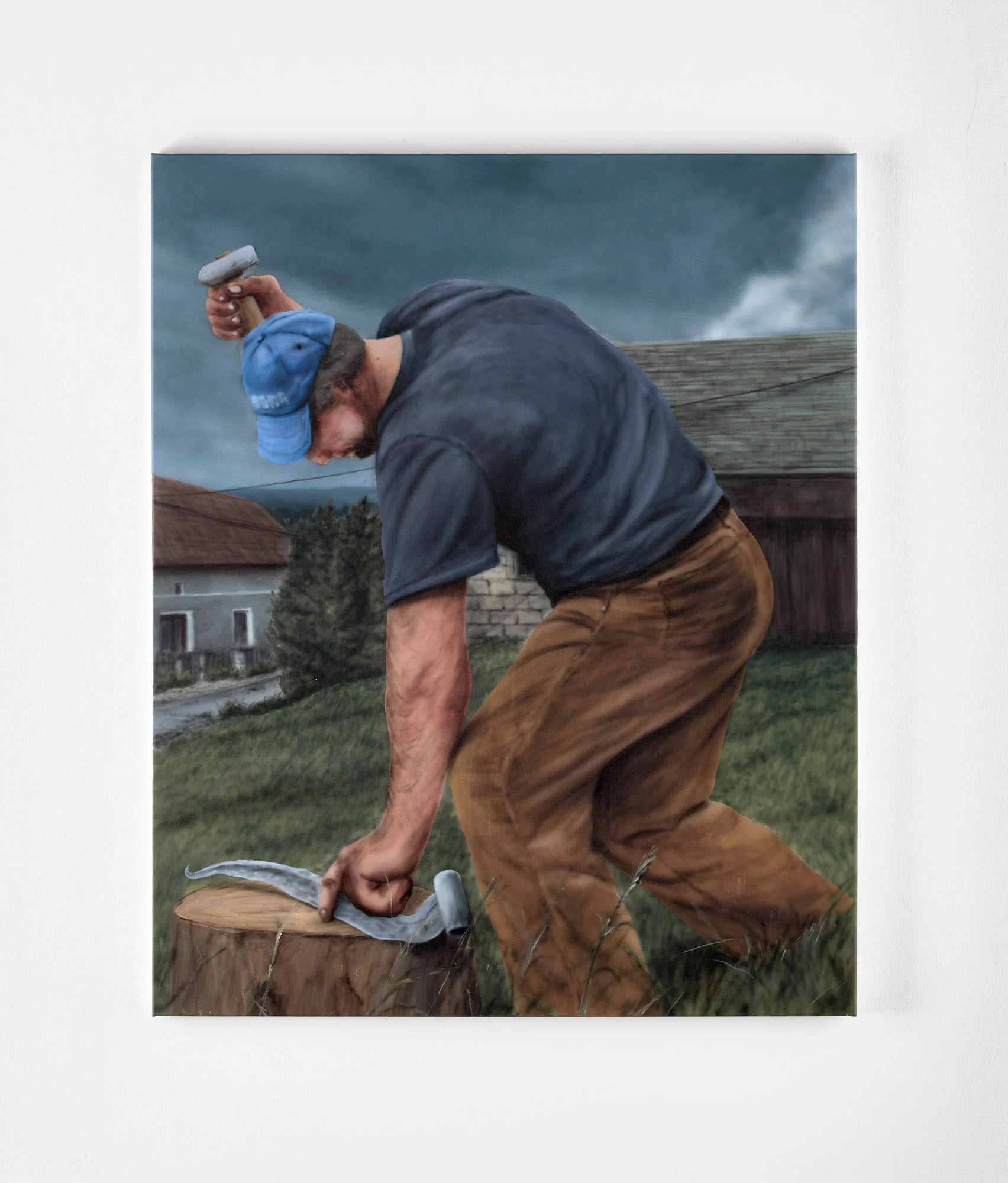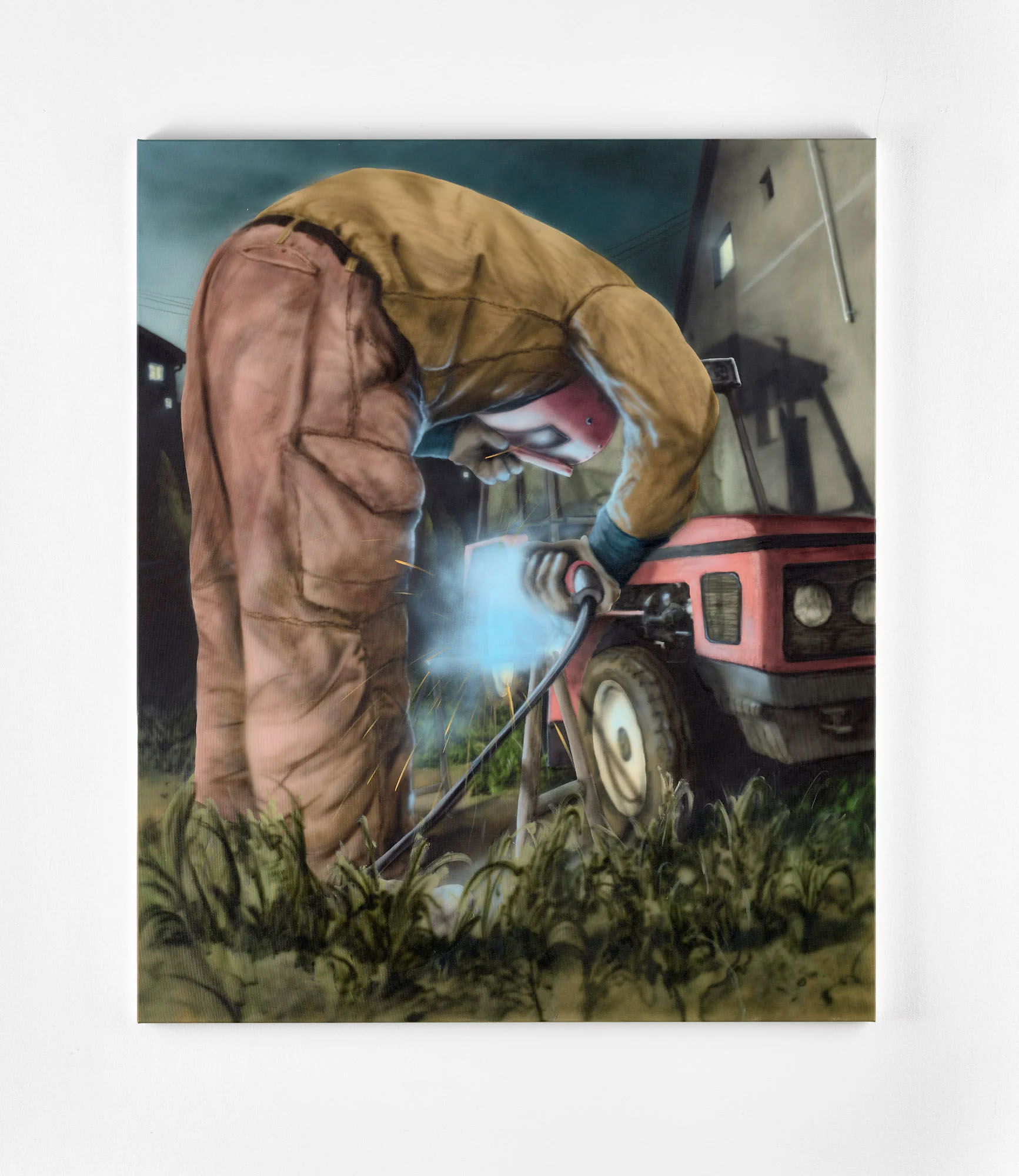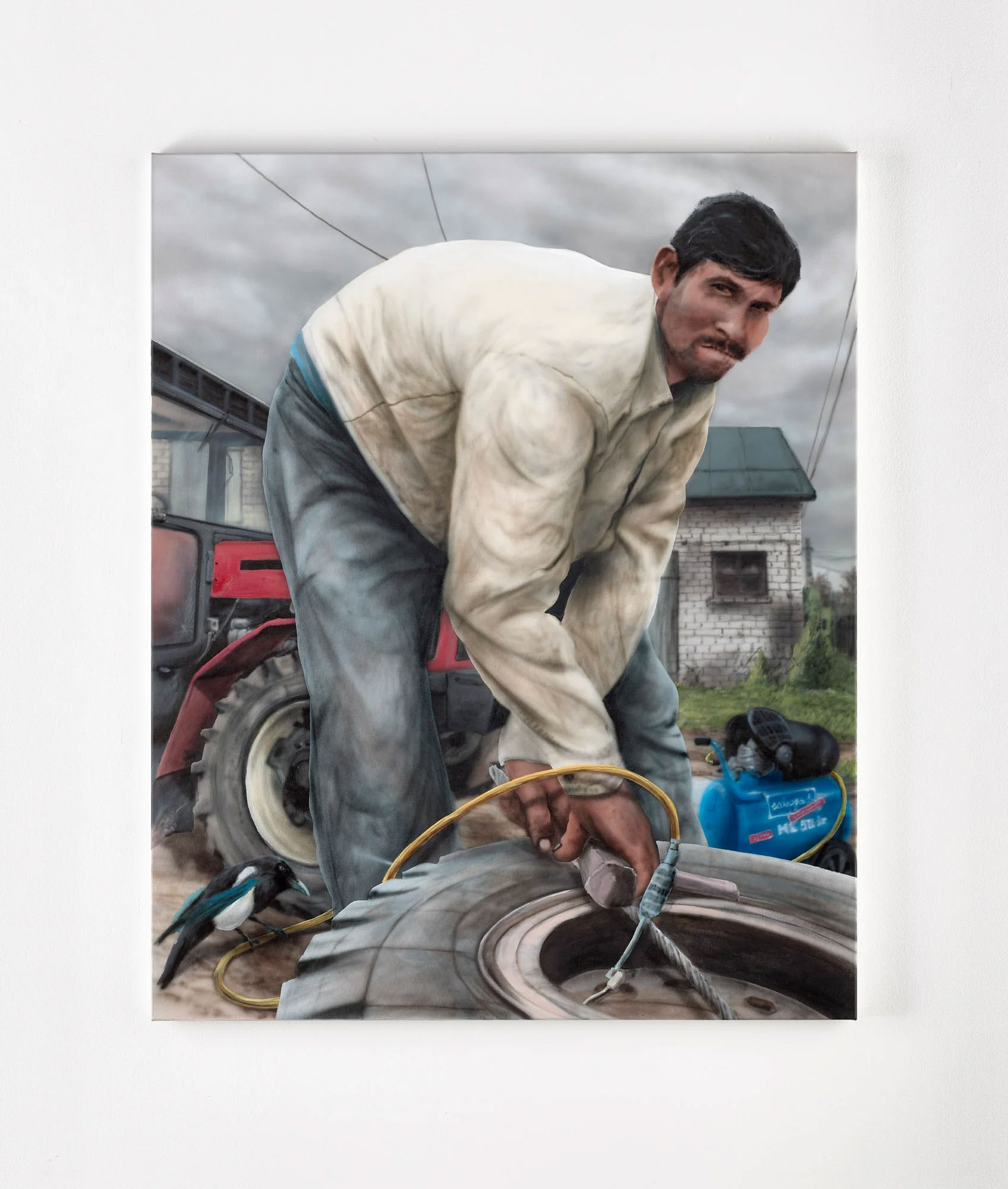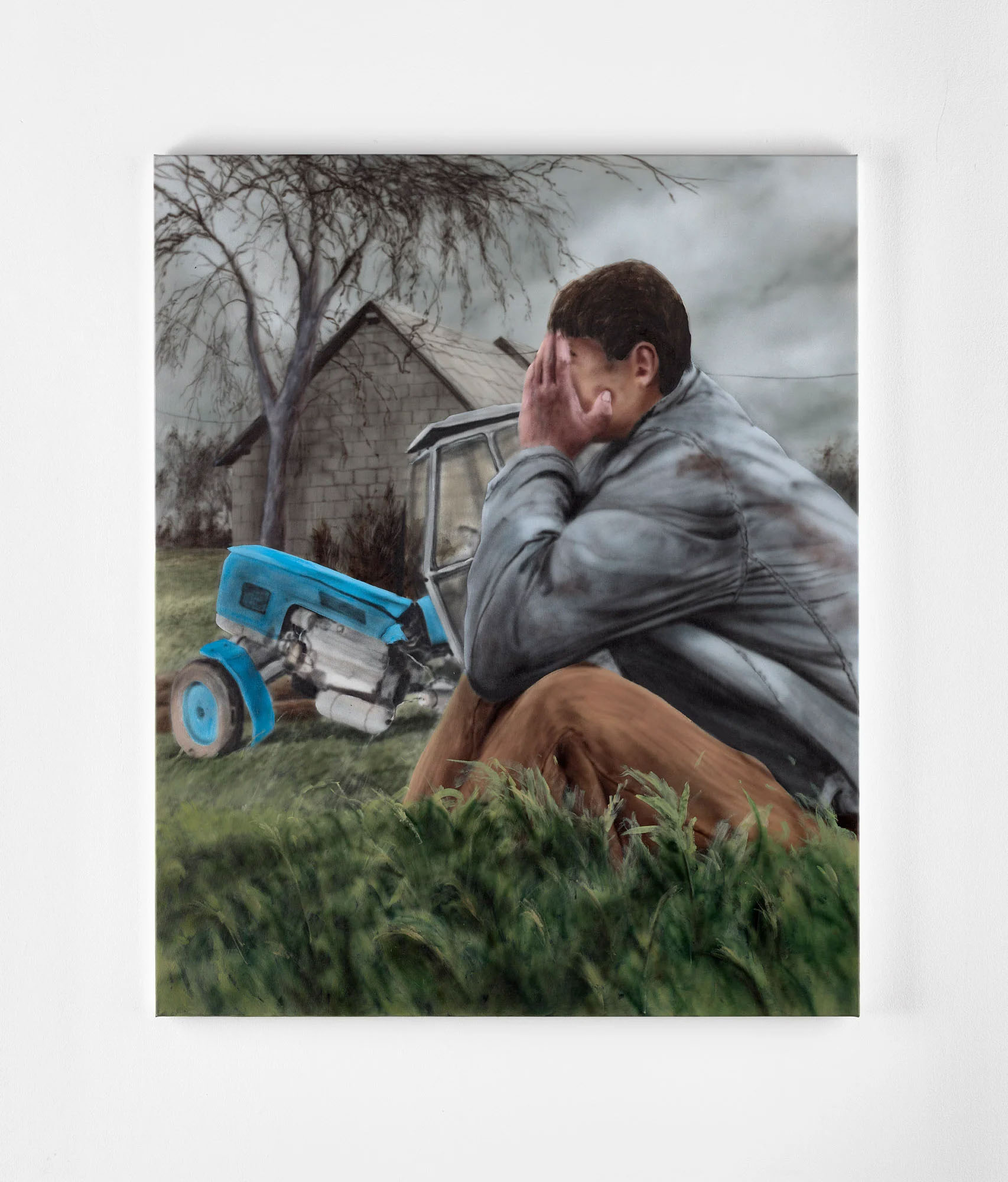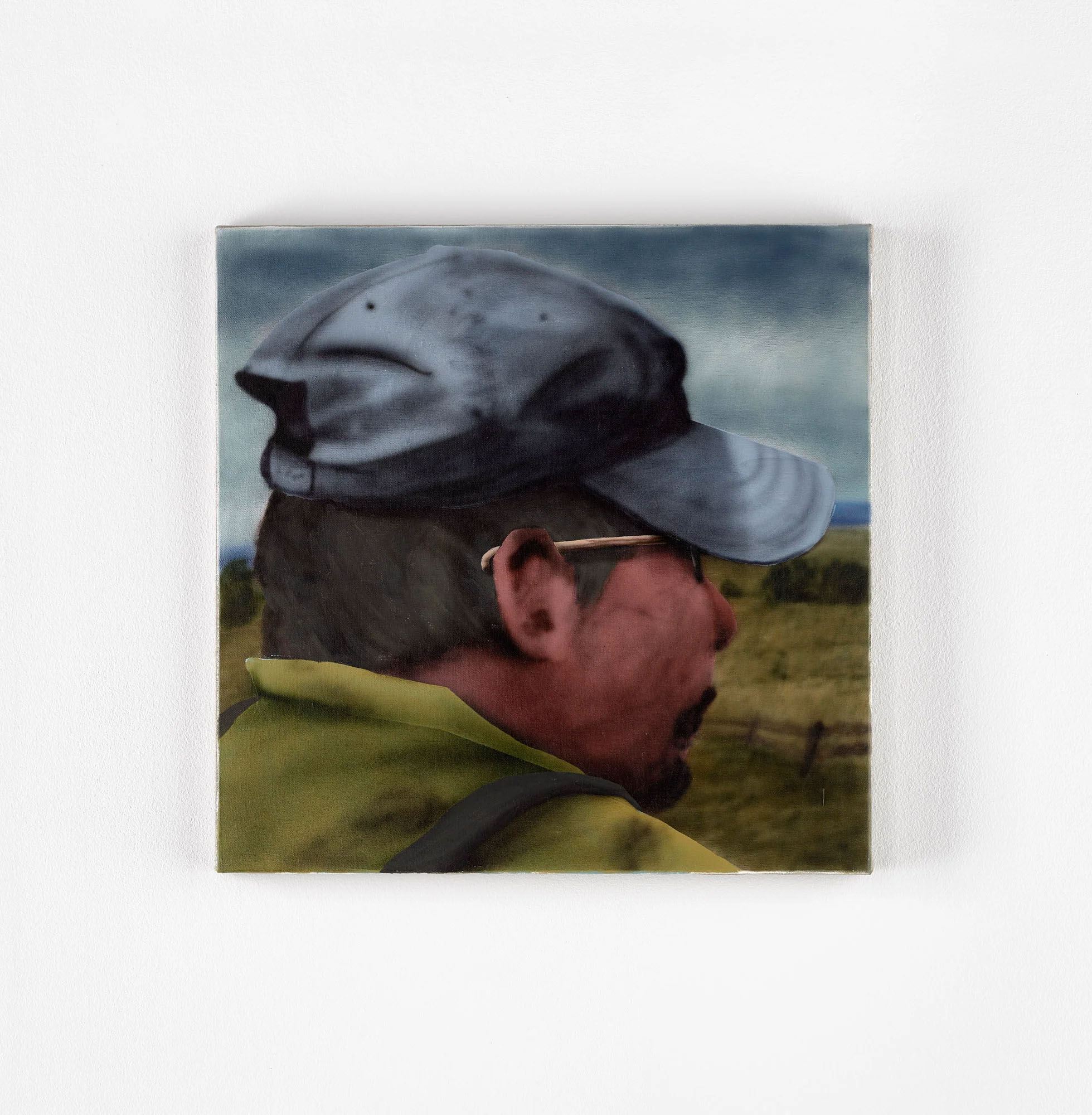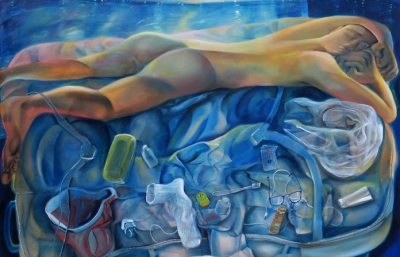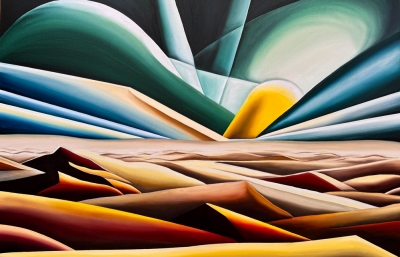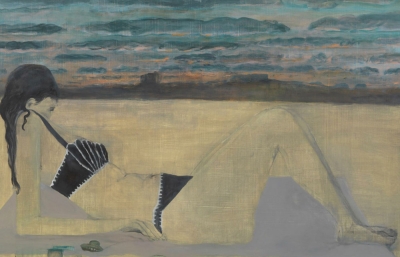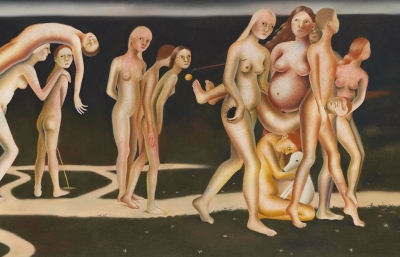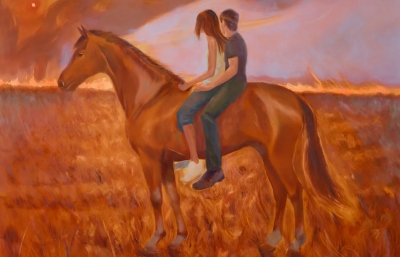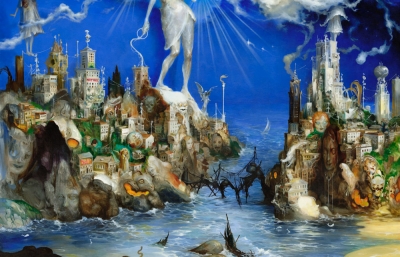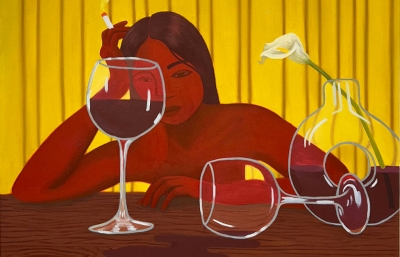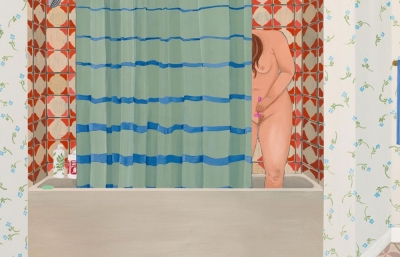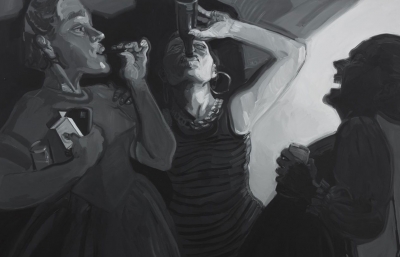Gray skies, rural scenery and manual labor—Martin Kačmarek's paintings are a heartfelt tribute to the countryside. In Busy Romance at NBB Gallery, he portrays farmers and hand-workers in agrarian settings with a perfect blend of realism and emotional depth, telling captivating stories of his characters. On one hand, Kačmarek is focusing on visually striking work motives such as the light of the welding machine, on the other he is telling personal stories through contemplative farmer portraits. With a hint of humor and satire, Kačmarek outweighs the dreary reality of rural life making his paintings relatable for all viewers.
However, rather than being an opposition to urban life, Kačmarek's countryside motives are inspired by the digital realm, drawing inspiration from online spaces and computer games. Conversely, the starting points for his compositions are found in online spaces and computer games such as Farming Simulator or in the vlogs of farmer micro-influencers who share their daily life online. While he grew up on a farm in Slovakia and takes care of his family’s farmland himself, his artistic vision is expanded by incorporating gaming aesthetics. This fusion allows him to create a wider range of motives and breathe life into his captivating artwork. Moreover, the mastery of the air brush technique used together with hard edges of his objects provides his canvases with an aesthetic of digital or rendered images.
In addition to the seven canvases in Busy Romance there are tools for agriculture inside the main gallery room elevating the art experience. Spades, sickles, and rakes enable a connection between the gallery space and the paintings. Although Busy Romance might celebrate work, there is also a component of relaxation: the artist even assembled a seating made out of straw bales for all visitors to sit on, bringing a tangible bit of the spaces depicted in his canvases to Berlin.

Also on view at NBB Gallery is Dominika Kováčiková’s exhibition Good For Her. Her small format oil paintings combine symbols of purity with disruptive imagery. Emphasizing feminine elements such as ribbons or lace, the paintings include blood, guns and weapons. As much as weapons appear dangerous, the artist rather emphasizes their protective function, making her female characters appear even stronger and more determined, ready to take revenge, protect themselves and overcome their past. The duality of the imagery as well as its interpretation is what Kováčiková indeed strives for. It can be the depiction of innocent characters in a mysterious forest or in haunting environments that evoke uncomfortable feelings. The manipulation of the environment allows one to go beyond the boundaries of the classical depiction of figures and keeps the viewer in suspense and anticipation. —Gabriela Klemová

